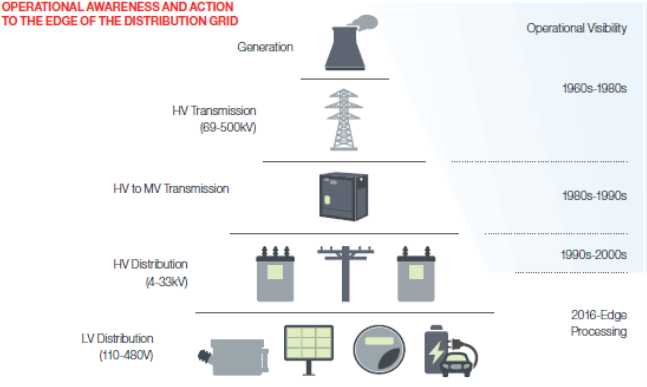The Active Grid
Source: Tim Driscoll · T&D WORLD · | October 19, 2020
A Case for Edge Intelligence on the Lower Voltage Network
Source: T&D World
A DISTRIBUTED GRID REQUIRES DISTRIBUTED INTELLIGENCE
It is a common misconception that the operation of distribution grids supporting significant amounts of distributed generation and storage capacity will just be a larger-scale version of the centralized supervisory control and data acquisition (SCADA) models used today to operate utility generation and transmission networks. SCADA systems consist of advanced sensors in the field that relay data in near real time to a centralized control system where operational decisions are made and then commands are relayed back to the devices in the field.
However, there is a significant difference between the traditional centralized generation and transmission network model and the next-generation distribution grid that thwarts a simple extension of the SCADA model into the distribution grid. In the traditional utility model, load or demand is variable, while generation and power flow are parameters centrally controlled by the utility (or system operator) through a relatively small number of points to respond to variations in load.
A DIFFERENT OPERATIONAL MODEL
In the distribution grid of the 21st century, where distributed energy resources (DERs) will be widespread if not ubiquitous, none of the three variables—load, generation and power flow—will be controlled by the utility or system operator. As a result, the distribution grid must respond to changing conditions in real time, not through a centralized command and control model like SCADA to meet demand, maintain grid stability and protect assets.

